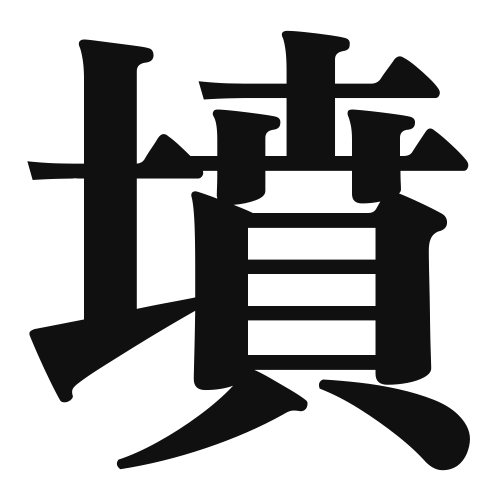1. Overview of Meaning
The kanji “墳” (pronounced “fun”) refers to a burial mound or tomb. It is often associated with ancient burial practices and signifies a place where the deceased are laid to rest.
2. Formation and Radical
Formation of the Kanji: The kanji “墳” is a compound character, which means it is formed by combining different elements. It consists of the radical “土” (meaning “earth” or “ground”) and the phonetic component “分” (which contributes to its pronunciation). This combination reflects the idea of earth being used to cover a burial site.
Radical: The radical of “墳” is “土,” which is commonly associated with earth-related concepts.
3. Examples of Usage
Common Words and Phrases: The kanji “墳” is often found in words like “古墳” (kofun), meaning “ancient burial mound,” and “墳墓” (funbo), meaning “grave” or “tomb.”
Example Sentence in Daily Conversation: “彼は古墳を訪れるのが好きです。” (Kare wa kofun o otozureru no ga suki desu.) translates to “He enjoys visiting ancient burial mounds.”
4. Synonyms and Antonyms
Similar Kanji: A similar kanji is “墓” (haka), which also means “grave” but typically refers to a more specific burial site rather than a mound. “墳” implies a larger, often historical burial structure.
Antonyms: An antonym could be “生” (sei), meaning “life,” as it represents the opposite of death and burial.
5. Cultural and Historical Background
Relation to Japanese Culture: The concept of “墳” is deeply rooted in Japanese history, particularly during the Kofun period (circa 250-538 AD), when large burial mounds were constructed for the elite. These mounds are significant archaeological sites today.
Proverbs and Idioms: While there may not be specific proverbs directly involving “墳,” the reverence for ancestors and the practice of honoring the dead are prevalent themes in Japanese culture, often reflected in various sayings and customs.
